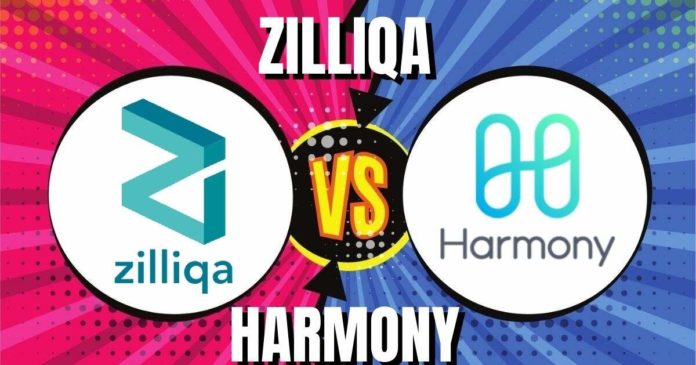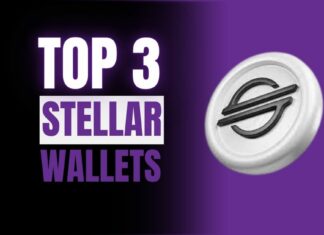Zilliqa and Harmony use sharding for better scalability, but what are the differences between them?
Nowadays, more and more merchants are looking at the possibility of accepting crypto payments; especially payments with Bitcoin and Ethereum. In order for crypto payment to be accepted as a serious solution, proposed payment methods must be better than current solutions.
The problem of scalability can be examined when comparing Bitcoin – with a maximum of 10 transactions per second (TPS) – and Ethereum, which can reach 40 TPS. Two projects that solve this TPS bottleneck by utilizing the sharding technique are Zilliqa and Harmony.
What Is Zilliqa?
Zilliqa is public blockchain platform which solves one of the biggest challenges for blockchains at the moment: scalability. Zilliqa was launched in 2017 and raised $22 million through an Initial Coin Offering (ICO). Initially, ZIL tokens were ERC-20 tokens, but after mainnet launch in 2019, these tokens were swapped for solely ZIL tokens.
Currently, ZIL is ranked 67th at the time of publication, with a total market capitalization of $1,600,353,252, and a price of $0.132259.
A solution that Zilliqa uses to solve scalability problems is called Sharding. With Sharding, the network is divided into groups of 600 nodes (shards). The work is divided among the shards and each shard is responsible for just a portion of the network transactions. For example, if there is five shards, each shard is responsible for 20% of the network transactions. When Zilliqa launched its testnet with 1800 nodes, Zilliqa achieved 2488 TPS.
In addition to having its own unique blockchain, Zilliqa has also developed its own programming language called Scilla. Ultimately, this allows developers to make smart-contracts on the Zilliqa blockchain using the Scilla language.
What Is Harmony?
Harmony is a blockchain platform that solves the problems of blockchain ecosystems like Ethereum, which include scalability issues, slow transactions, and high gas fees. This is possible through Harmony’s sharding system and consensus protocol: Effective Proof of Stake (EpoS). Unlike Zilliqa, Harmony uses sharding not only as a transaction layer, but also uses it as a consensus layer. Thus, improving decentralization.
The Harmony project was launched on Binance Launchpad in 2019. The Harmony ONE token is used as a stake for the EpoS allowing staking holders to earn block rewards and transaction fees. Also, the ONE token is used for holders voting rights in the governance of the protocol, and for paying fees.
Harmony ONE token is ranked 89th at the time of publication, with a total market capitalization of $1,024,373,535, and a price of $0.100522.
Comparison Between Zilliqa (ZIL) and Harmony (ONE)
You can see a comparison of these two projects in the following table:
| ZILLIQA (ZIL) | HARMONY (ONE) | |
| Ranking: | 66 | 78 |
| Market capitalization: | $1.5B | $1.1B |
| Token price: | 0.13 | 0.11 |
|
Fully sharded architecture: |
NO (only network and transaction level sharding) |
YES |
|
Consensus Algorithm & Validator registration: |
Byzantine Consensus Algorithm (PBFT); POW used for miners verification | Byzantine Consensus Algorithm (PBFT); EPOS used for determining voting stakes |
| Testnet result: | With 1800 nodes: 2.8K TPS | With 44000 nodes: 118K TPS |
| Latency: | 120s | 8s |
|
Special feature: |
New language for Smart Contracts | Security against 1% shard attack |
Both projects solve the problem of scalability with the sharding technique, but in a different ways. Visa has a scalability of less than 2000 TPS, so we can say that Zilliqa has sufficient scalability, while Harmony has a much higher scalability than is currently needed. Additionally, the Harmony blockchain is more decentralized than Zilliqa, and has better latency.
Zilliqa, on the other hand, has its own special language for smart-contracts, which is very important for developers.
Harmony is currently interoperable with Ethereum and Binance Smart Chain, but Zilliqa plans to enable greater interoperability among the Zilliqa, Bitcoin, Ethereum, Neo, Ontology, Binance Smart Chain, Switcheo, Elrond, and Huobi Eco Chain (via the Poly Network bridge).
In conclusion, both Zilliqa and Harmony have advantages over other. Harmony’s blockchain has better scalability and decentralization, while Zilliqa’s blockchain has sufficient scalability and decentralization in addition to its own language for smart contracts.
Join us on Telegram to receive free trading signals.
Find out more about the crypto and blockchain space on the Altcoin Buzz YouTube channel.





























Latency for Harmony One is wrong. It’s not 8 seconds, it’s a whopping 2.11 seconds.
Source: https://explorer.harmony.one/#/